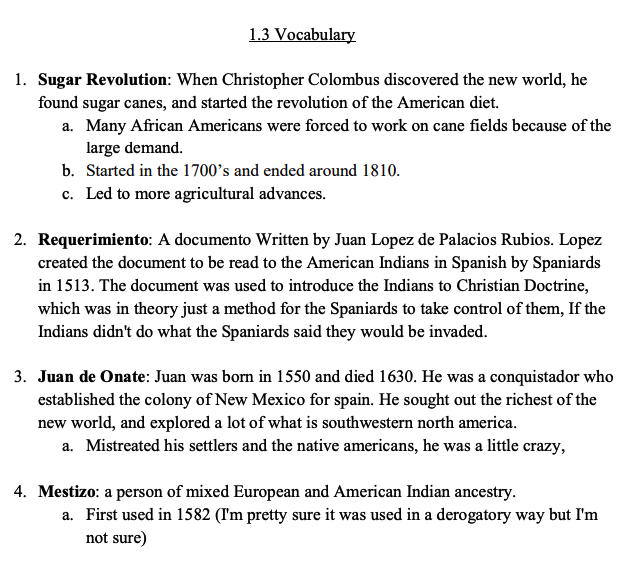The Sugar Revolution and The Americas (Grade A)
Summary:
The Sugar Revolution began in the 1700s when Columbus discovered sugarcane in the New World, reshaping the American diet and increasing demand that led to the forced labour of many African Americans. Meanwhile, the Requerimiento, penned by Juan Lopez de Palacios Rubios in 1513, was ostensibly a means to introduce American Indians to Christianity but was mainly a tool for Spanish control. In the late 16th century, Conquistador Juan de Onate established New Mexico’s colony, albeit with a notorious reputation for mistreatment. The term “Mestizo” emerged in 1582 to describe individuals of mixed European and American Indian heritage. The Atlantic slave trade saw 10-12 million Africans forcefully transported to the Americas from the 16th to 19th centuries, with Portuguese vessels adapting to this cruel trade post-1502. Maroon communities comprised escaped enslaved Africans who sought refuge in remote or dense terrains. The “Black Legend” painted Spaniards negatively, emphasizing their purported cruelty. The Encomienda system, operational from 1503 to 1721, was designed to address the early mining needs of American colonies by defining indigenous status. Bartolome De las Casas, a Spanish historian and missionary born in 1474, highlighted the oppression of indigenous populations and called for slavery’s abolition. Contrarily, Juan de Sepulveda, a key figure in Charles V’s court, wrote to support the Spanish conquest and the subjugation of the indigenous populations.
Excerpt:
The Sugar Revolution and The Americas
1.3 Vocabulary
- Sugar Revolution: When Christopher Colombus discovered the new world, he found sugar cane, and started the revolution of the American diet.
- Many African Americans were forced to work in cane fields because of the large demand.
- It started in the 1700s and ended around 1810.
- This led to more agricultural advances.
- Requerimiento: A documento Written by Juan Lopez de Palacios Rubios. Lopez created the document to be read to the American Indians in Spanish by Spaniards in 1513. The document introduced the Indians to Christian Doctrine, which was, in theory, just a method for the Spaniards to take control of them. If the Indians didn’t do what the Spaniards said, they would be invaded.


Reviews